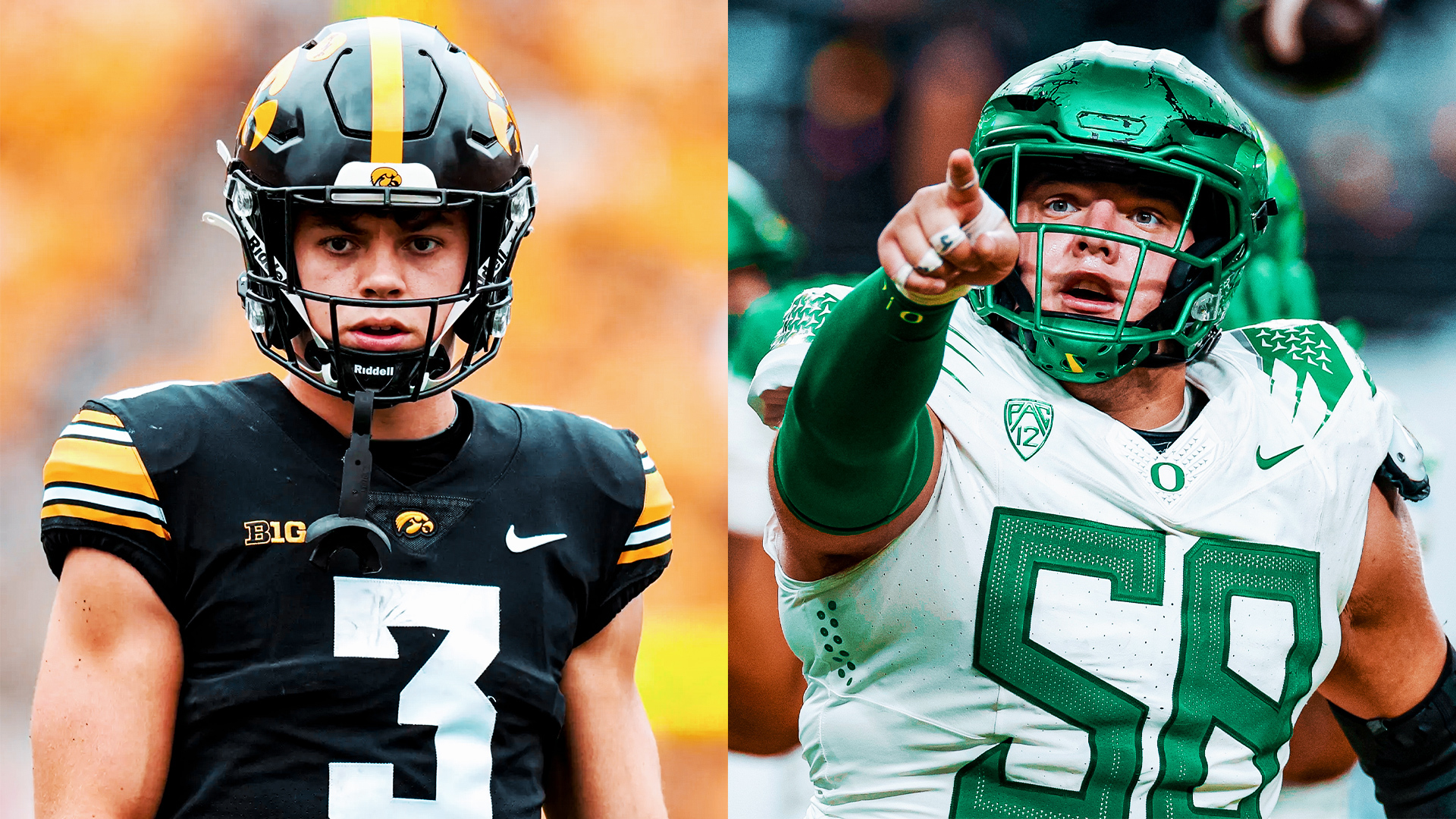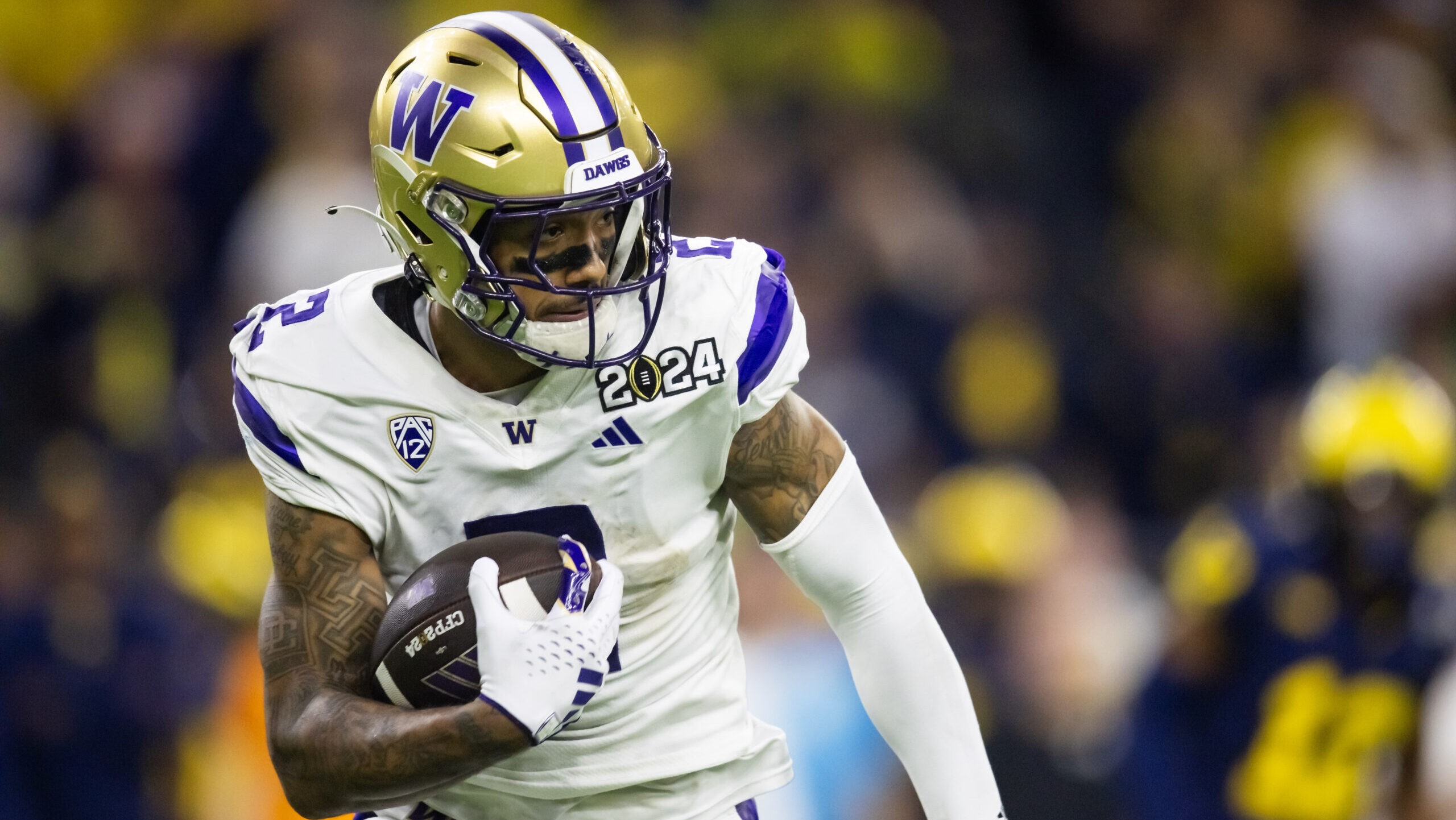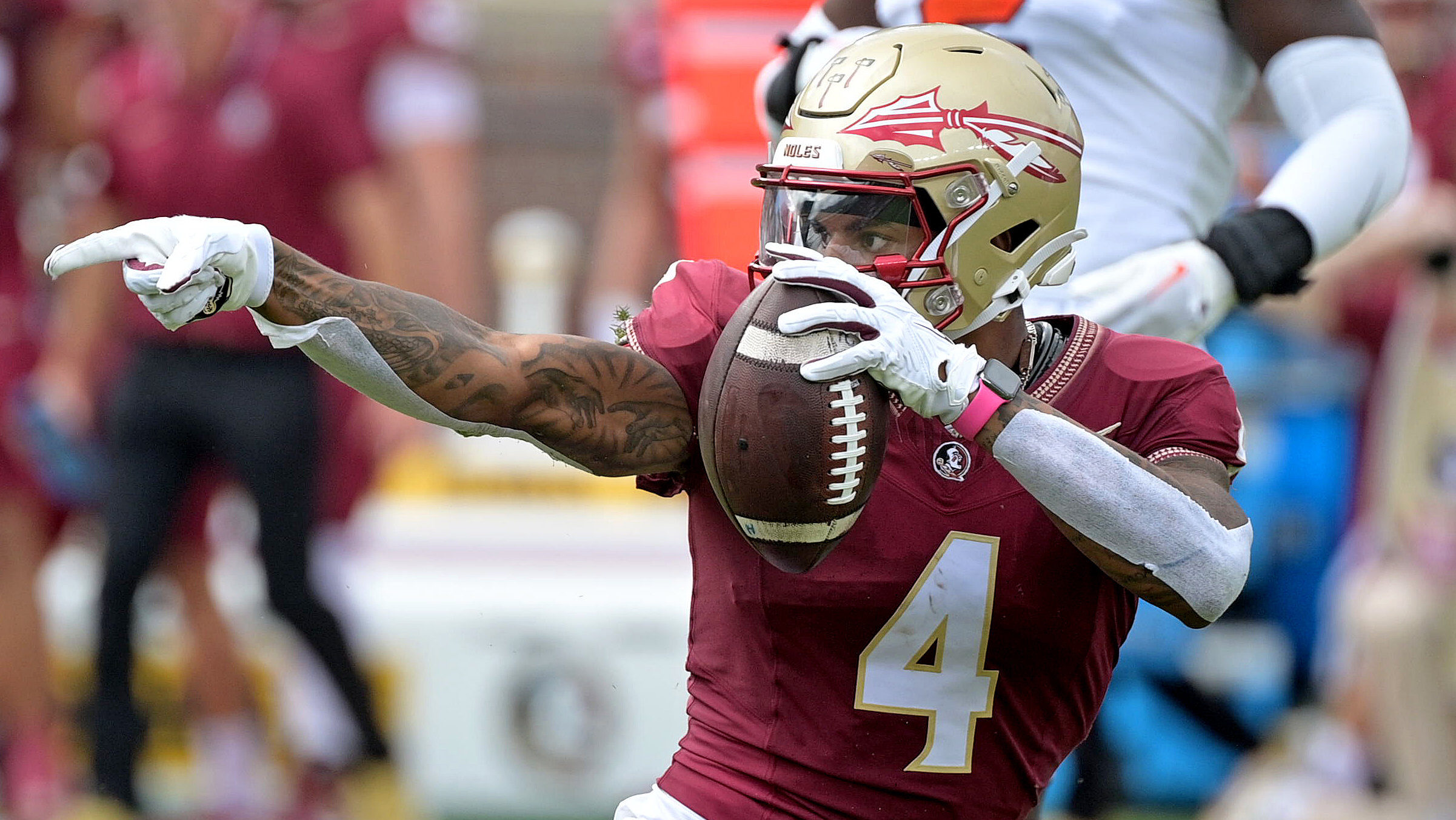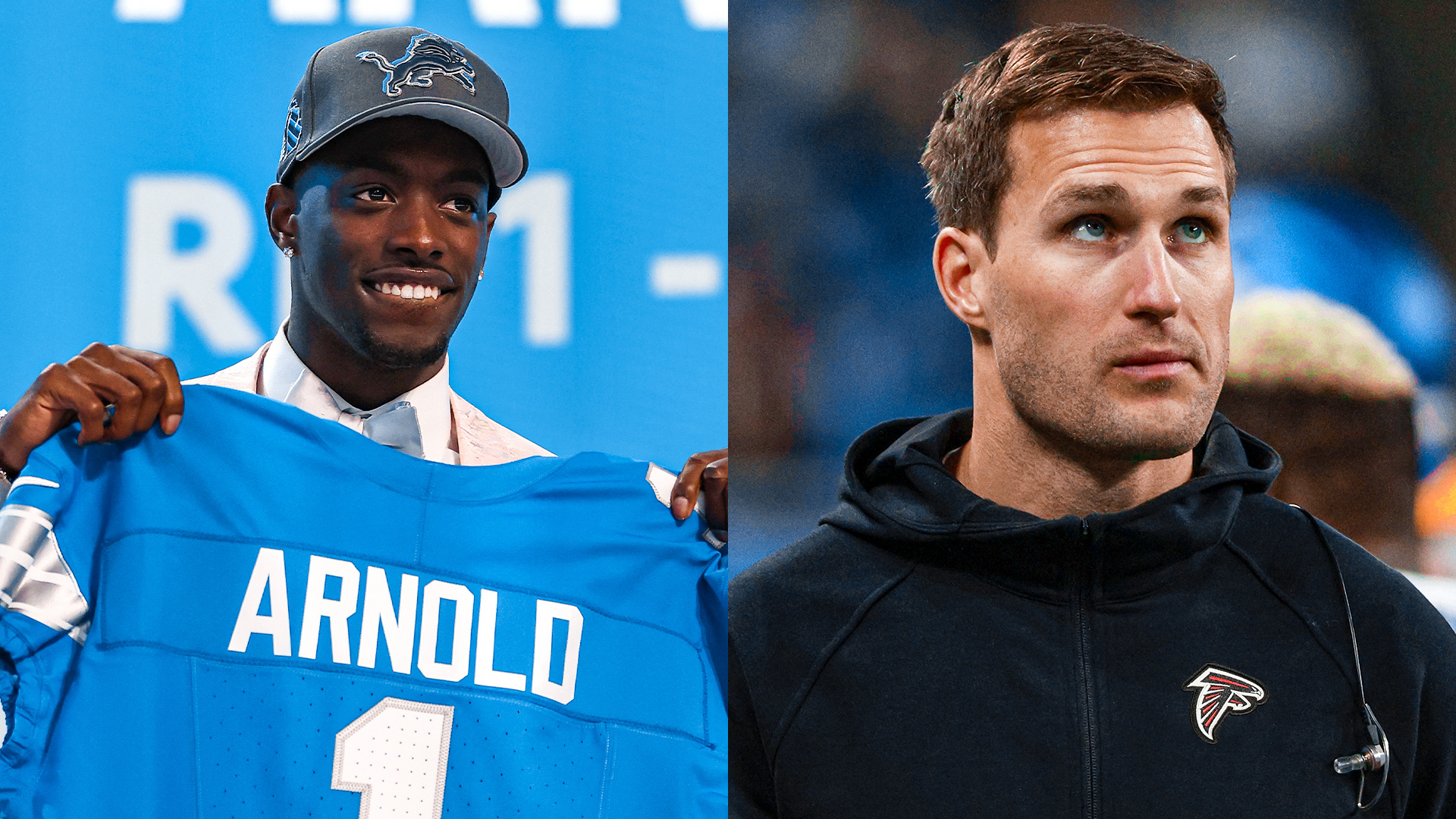Analysis
10/14/23
12 min read
How To Handle Week 6 Chalk in DFS
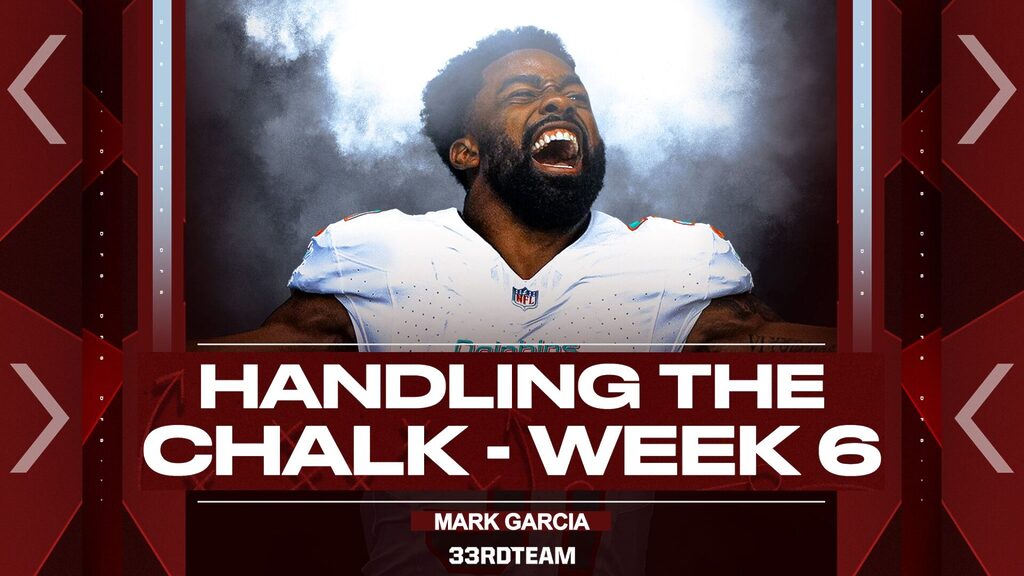
In a popular, competitive league like the NFL, it's a certainty that chalk will develop on any given slate of games. DFS players looking for a sense of control in the face of uncertainty will naturally gravitate toward certain expected outcomes in an effort to avoid unknowns and risks. This search for comfort is precisely what we will dissect and break through in this weekly article.
We’ll also explore theoretical and conceptual areas of roster construction in DFS as we examine various pieces of chalk throughout the season, to grow as players along the way. Numerous tips, or best practices, will emerge from this exploration. With that, and in our best Bruce Buffer voice, it’s time!
Week 6 Chalk
 Raheem Mostert, Miami Dolphins
Raheem Mostert, Miami Dolphins
Only two teams are on this slate with a Vegas-implied team total around or surpassing four touchdowns. The Miami Dolphins lead the way with a hefty 30.75 team total (the other is the Los Angeles Rams at 27.75). No other team has an implied team total over 24.25 (Jaguars). The Dolphins are also expected to be extremely thin at running back with De’Von Achane now on injured reserve and Jeff Wilson likely not ready to be activated in time for Week 6.
That leaves just Raheem Mostert, Salvon Ahmed and Chris Brooks as healthy backs for Miami against the sieve-like run defense of the Carolina Panthers, who rank dead last in run DVOA, allow 1.46 yards before contact per carry (25th), and surrender 4.9 yards per carry this season.
The Dolphins lead the league in explosive rush rate. It all adds up here. That said, Mostert is doubtful to see more than 20-22 running back opportunities, instead likely to cede work to some combination of Ahmed and Brooks, meaning there are at least some things outside of the matchup and previous production to consider.
 Christian Kirk, Jacksonville Jaguars
Christian Kirk, Jacksonville Jaguars
Christian Kirk has seen 40 targets over his previous four games, during which time Zay Jones has either been out of the lineup or left early with an injury. Jones will miss Week 6, leaving a combination of Tim Jones and Jamal Agnew to soak up the snaps leftover behind Kirk, Calvin Ridley and tight end Evan Engram.
The Indianapolis Colts play some of the heaviest rates of Cover-3 in the league, a defensive alignment that typically benefits opposing WR1s and the tight end, neither of which Kirk is. To put this play in context, Kirk has averaged 10 targets per game in his past four games, is priced at just $5,400, and plays for the team with the third-highest Vegas-implied team total.
What is lost in that discussion is a modest (to put it lightly) 7.4 aDOT (87th), 1.84 yards per route run (41st), and elite man coverage route win rate (55.1 percent, sixth). The team’s zone-beater (and Cover-3-beater) is Ridley, who appears to be largely overlooked on this slate.
 Chuba Hubbard, Carolina Panthers
Chuba Hubbard, Carolina Panthers
Per Draftsharks’ Jared Smola, Miles Sanders and Chuba Hubbard combine to average 19.2 carries and 7.6 targets per game this season. Sanders is out for Week 6, and head coach Frank Reich indicated this week that he expects Hubbard to soak up most of the backfield work in the absence of Sanders.
While we can’t simply extrapolate those workload values to a backup running back on a team listed as the largest underdog on the week, we can expect lead back plus usage from Hubbard on a team that targets the running back position heavily. All wrapped up in a $4,300 salary on DraftKings.
Can Hubbard reach the 100-yard rushing threshold, see four to six targets and find paint in this spot (which would return a GPP-viable score)? This season's efficiency metrics seem to indicate it is well within his range of outcomes here, with the biggest uncertainty involving the expected game environment.
 Kyren Williams, Los Angeles Rams
Kyren Williams, Los Angeles Rams
Kyren Williams has scored multiple touchdowns in three of five games this season, one of which came while sharing the backfield with Cam Akers. Even so, he has broken 100 yards just once in five games (it took 25 carries), his 3.8 true yards per carry ranks 37th in the league and he has just one breakaway run on 77 carries. The matchup and the opportunity are good, but he lacks talent, leaving paths to failure that the field might not fully account for in this spot.
 Ja’Marr Chase, Cincinnati Bengals
Ja’Marr Chase, Cincinnati Bengals
We have talked about Ja’Marr Chase and head coach/offensive play caller Zac Taylor more than any other team, player, or coach this season, and for good reason. Taylor has shown extreme inconsistency in game planning and game management, primarily struggling to exploit two-high defensive looks and Cover-3, of which he will see a ton against the Seahawks in Week 6.
While Joe Burrow’s calf looked a little healthier in Week 5, he still played almost exclusively from the gun. That limits a few things against the previously mentioned defensive alignments. Expected yards per carry suffers, pre-snap motioning ability lessens, and the offense becomes more constrained to higher rates of short area work. That places an increased emphasis on stringing drives together and a need to overcome longer down and distance situations due to an ineffective run game.
Those should only be amplified against an extreme pass-funnel Seattle Seahawks defense that ranks second in run DVOA. Can Chase (and Taylor) overcome those limitations? Sure, they can, they have in two of their previous three games! That said, when things don’t come together, the team and Chase could fail hard.
 Josh Jacobs, Las Vegas Raiders
Josh Jacobs, Las Vegas Raiders
Like Kyren Williams, Josh Jacobs carries extreme usage and massive share of team running back opportunities but has struggled with efficiency this season. His 2.87 yards per carry is lightyears behind where he was in 2022 when he took home the rushing title.
The matchup against a struggling New England Patriots defense is worse than perception, as New England ranks ninth in run DVOA and holds opponents to just 3.6 yards per carry behind 1.27 yards allowed before contact this season. Jacobs is unlikely to break 100 yards in this spot, meaning he will likely need robust passing volume and multiple scores to pay off his price tag. In other words, he is doubtful to sink you for playing him (due to volume) but equally as unlikely to return a ”had to have it” score.
 Alvin Kamara, New Orleans Saints
Alvin Kamara, New Orleans Saints
Twenty-four running back opportunities in both games since returning to the team from his three-game suspension speaks volumes for Alvin Kamara in New Orleans. The Houston Texans hold opposing backs to 1.29 yards before contact per carry but have struggled with missed tackles at an elevated rate, leading to a “still not terrible” 3.9 yards per carry allowed.
Their primary shortcoming against the run is the eight rushing scores allowed through five games, tied for 30th in the league. Kamara’s efficiency metrics have been down over the previous three seasons since taking on a larger rushing workload, which has remained true in 2023 with a 4.0 true yards per carry (31st), 3.7 yards per touch (42nd), and low 14.3 percent juke rate (39th).
 Travis Etienne, Jacksonville Jaguars
Travis Etienne, Jacksonville Jaguars
Travis Etienne has always had the burst and vision to rip off chunk gains. He had been missing volume, which he now holds in spades (80.6 percent opportunity share ranks fifth in the league). Still, he has seen just eight red zone touches through five weeks, three of which came in the team’s Week 5 game in London. Was that a signal of more red zone work moving forward, or was that noise associated with a single game sample size? Your guess is as good as mine, but questions remain.
 Evan Engram, Jacksonville Jaguars
Evan Engram, Jacksonville Jaguars
Evan Engram has exactly eight targets in his last four games, which aligns with the four games in which Zay Jones has either missed or not made it through due to knee injuries. As noted above, Cover-3 defensive alignments typically filter additional volume to opposing tight ends, albeit with fewer chances for chunk gains and broken plays due to the increased number of defensive personnel in the middle of the field with their eyes in the backfield (on the quarterback). Consider Engram a high floor, moderate ceiling play against the Colts.
 Joe Mixon, Cincinnati Bengals
Joe Mixon, Cincinnati Bengals
We’re doing this again with Joe Mixon? Mixon has been one of the most inefficient backs during the previous two seasons and now must overcome taking most of his handoffs from a quarterback in the gun. He was stuffed two more times on goal-to-go attempts from the one last week.
Theoretical Discussion
Week 6 is the week of running back chalk. There are currently seven running backs that are projected to be on more than 20 percent of rosters in play – with one major fulcrum chokepoint in Hubbard (for his low salary). As for the state of the slate, we have zero games above a 50-point game total, and there are only two teams with a Vegas-implied team total approaching or surpassing four touchdowns – the Dolphins (30.75) and Rams (27.75).
Every other team carries a Vegas-implied team total of 24.25 (Cincinnati Bengals) or lower. But beyond that macro view, this slate is setting up to have a large portion of extremely similar roster constructions, which we will always look to leverage away from. As we have largely handled slates in this “down scoring” year, we can gain significant leverage and boosts to expected value by searching for teams that outperform expectations.
On that note, I posited this week that the dynamics of the running back position in DFS are likely changing. Basically, projection systems seem to have achieved the required sample size to back test their algorithms enough to provide more narrowed median projections, leading to a state of equilibrium developing about the most projectable position – running back. Whether or not we have reached full equilibrium remains to be seen (still a relatively small sample size of 1.3 seasons or about 24 iterations), but the recent hit rates of chalk at running back are startling.
That said, we absolutely can’t simply look to ownership to judge a play. Rather, we should not let ownership scare us away from good on-paper plays simply to attempt to generate leverage, which would, by definition, simply dent expected value without generating an offsetting (and important) boost to expected value (EV). That should sound familiar to those familiar with my works in Game Theory (read my courses or listen to the Best Ball + series at One Week Season from this offseason). For those that haven’t, a quick crash course.
Equilibrium occurs when no agent or player can gain an appreciable edge through taking action away from theoretical optimal, which could be defined as “playing the best on-paper plays at the running back position” for this discussion. An exploit is an action straying from theoretical optimal designed to take advantage of field tendencies through observations of other agents (or players) in a game.
Typically, we take exploitative actions because we gain a boost in EV greater than the loss in EV from the exploit itself. Because every deviation away from theoretical optimal will dent EV, this boost is necessary for profitable play. Otherwise, we should simply stick to theoretical optimal action. Suppose projections systems are at, or approaching, equilibrium at the running back position. In that case, we theoretically cannot gain that boost to EV to offset the loss in EV from the deviation or exploit.
In most cases, that leaves us with a position that is best to bypass when looking to generate leverage on the field. That caveat is important, particularly through the lens of this slate, because we have some questionable chalk developing at the running back position this week. In other words, we shouldn’t concern ourselves with chalk at running back as much as we do with other positions, as we can gain a larger boost to EV by exploiting field tendencies in other spots.
For example, we have three years’ worth of data that tells us tight ends should be correlated to the quarterback on the roster due to the hit rates of that pairing, which are larger than the utilization by the field. Another example is the QB-RB-pass-catcher team stack without a forced bring-back, which appeared on 18 percent of the optimal rosters over the previous three seasons yet is not utilized by the field at that rate.
Finally, consider naked team stacks without a forced bring-back, which leverages the state of the NFL in today’s game. Remember, scoring is down since a peak of 2.88 touchdowns per team per game in 2020 (currently on pace for 2.30 in 2023).
Practical Application
Four of the five top offenses in the league are on the main slate. The Miami Dolphins rank first in points per game at 36.2, the San Francisco 49ers rank second at 33.4, the Detroit Lions rank fourth at 29.6 and the Philadelphia Eagles rank fifth at 28.2. Put another way, four offenses on this slate average more than four touchdowns per game. The Seattle Seahawks rank sixth at 27.8, so they just barely miss that threshold.
Behind those five teams, the next highest-scoring team on the main slate is the Indianapolis Colts at 24.0, but the Chicago Bears have scored 34 points per game over their previous two games. If we’re looking for certainty on a slate with a lot to trip us up, why not start at the offenses experiencing the most success? When building a player pool, this is often a good place to start your process. Take the quarterbacks from each team and find their best stacking partners. Build out rosters and see where it takes you.
Some things we can do on this slate while also considering some of the leverage angles we discussed above include Jalen Hurts + DeVonta Smith + D’Andre Swift, Tua Tagovailoa + Tyreek Hill + Mostert, Brock Purdy + Christian McCaffrey + Brandon Aiyuk, Jared Goff + Amon-Ra St. Brown + Sam LaPorta, and Geno Smith + Kenneth Walker + Jaxon Smith-Njigba, to name a few.
That will do it for our Week 6 exploration of chalk and some theoretical and conceptual takeaways. We’ll run this series every week of the 2023 season, picking out new learning points each week. I welcome all feedback with this new column, so please don’t hesitate to reach out to let me know things you like or things I could do better.
Follow The 33rd Team Podcast Network on Spotify and Apple Podcasts.


